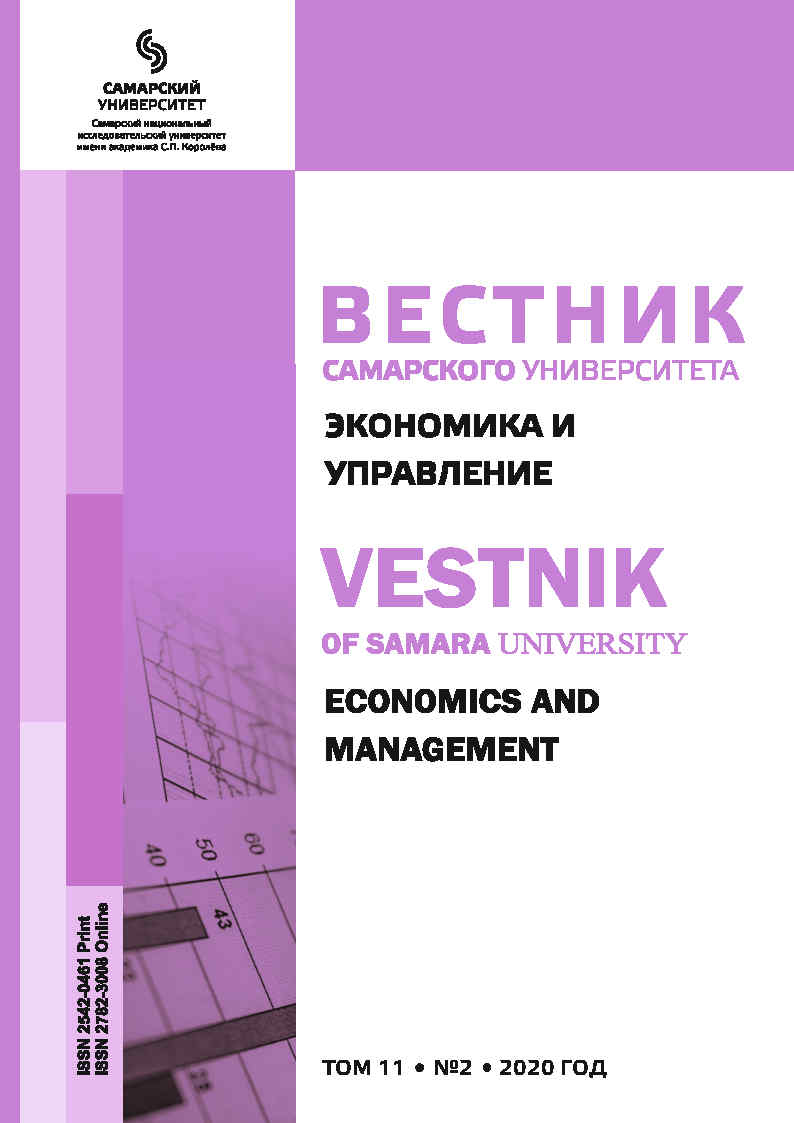MULTI-FACTOR MATHEMATICAL MODEL OF DEVELOPMENT OF A PRODUCTION ENTERPRISE ACCOUNTED BY INTERNAL AND EXTERNAL INVESTMENTS
- Authors: Saraev A.L.1, Saraev L.A.1
-
Affiliations:
- Samara National Research University
- Issue: Vol 11, No 2 (2020)
- Pages: 157-165
- Section: MATHEMATICAL AND INSTRUMENTAL METHODS OF ECONOMICS
- URL: https://journals.ssau.ru/eco/article/view/7861
- DOI: https://doi.org/10.18287/2542-0461-2020-11-2-157-165
- ID: 7861
Cite item
Full Text
Abstract
The published article proposes new models of the dynamic development of enterprises that restore their production through internal and external investments. Equations of balance are established for such enterprises, which describe changes in output and factors of production. The developed economic and mathematical models are presented in the form of systems of differential equations for an arbitrary number of production factors. In these models, proportional, progressive and digressive depreciation charges are considered. Their interaction with internal and external investments is investigated. Equations are obtained that describe the equilibrium state of enterprises and the corresponding limit values of production factors are calculated. Constructed in the form of systems of differential equations, economic and mathematical models allow you to describe the various modes of operation of enterprises. Such regimes include stable production output by enterprises, temporary suspension of enterprises for the period of its technical re-equipment, and temporary partial winding up of production. As an example, a two-factor enterprise model is considered in detail. The regularities of the influence of depreciation, internal and external investments on the dynamics of the enterprise are established. Equilibrium equations are obtained and the marginal volumes of production factors of the enterprise – fixed capital and labor – are calculated.
About the authors
Alexander L. Saraev
Samara National Research University
Author for correspondence.
Email: alex.saraev@gmail.com
ORCID iD: 0000-0002-9223-6330
Candidate of Economical Sciences, associate professor of the Department of Mathematics and Business Informatics
Russian FederationLeonid A. Saraev
Samara National Research University
Email: saraev_leo@mail.ru
ORCID iD: 0000-0003-3625-5921
Doctor of Physical and Mathematical Sciences, professor, head of the Department of Mathematics and Business Informatics
Russian FederationReferences
- Nizhegorodtsev R.M. Models of logistics dynamics as a tool for economic analysis and forecasting. In: Modeling of economic dynamics: risk, optimization, forecasting. Moscow, 1997, pp. 34–51. (In Russ.)
- Badash Kh.Z. The economic-mathematical model of the economic growth of enterprises. Bulletin of Udmurt University. Series Economics and Law, 2009, no. 1, pp. 5–9. Available at: https://www.elibrary.ru/
- item.asp?id=(In Russ.)
- Korolev A.V., Matveenko V.D. Structure of equilibrium time-varying trajectories in the Lucas endogenous growth model. Automation and Remote Control, 2006, vol. 67, pp. 624–633. DOI: https://doi.org/10.1134/S0005117906040102. (In Russ.)
- Kuznetsov Yu.A., Michasova O.V. Comparative analysis of the application of simulation packages and computer mathematics systems for the analysis of models of the theory of economic growth. Economic Analysis: Theory and Practice, 2007, no. 5 (86), pp. 23–30. Available at: https://cyberleninka.ru/article/n/sravnitelnyy-analiz-primeneniya-paketov-imitatsionnogo-modelirovaniya-i-sistem-kompyuternoy-matematiki-dlya-analiza-modeley. (In Russ.)
- Kuznetsov Yu.A., Michasova O.V. The generalized model of economic growth with human capital accumulation. Vestnik of Saint Petersburg University. Applied Mathematics. Computer Science. Control processes, 2012, no. 4, pp. 46–57. Available at: https://www.elibrary.ru/item.asp?id=18079557. (In Russ.)
- Prasolov A.V. Mathematical methods of economic dynamics. Saint Petersburg: Izdatel'stvo «Lan'», 2015,
- p. (In Russ.)
- Uzawa H. Optimal technical change in an aggregate model of economic growth. International Economic Review, 1965, vol. 6, no. 1, pp. 18–31. Available at: http://kisi.deu.edu.tr/yesim.kustepeli/uzawa1965.pdf.
- Lucas R.E., Jr. On the Mechanics of Economic Development. Journal of Monetary Economics, 1988, vol. 22, no. 1, pp. 3–42. Available at: https://www.parisschoolofeconomics.eu/docs/darcillon-thibault/lucasmechanic
- seconomicgrowth.pdf.
- Barro R., Sala i Martin X. Economic Growth. 2nd edition. Cambridge, Massachusetts: MIT Press, 2004, 142 p. Available at: http://piketty.pse.ens.fr/files/BarroSalaIMartin2004Chap1-2.pdf.
- Gong G., Greiner A., Semmler W. The Uzawa-Lucas model without scale effects: theory and empirical evidence. Structural Change and Economic Dynamics, 2004, vol. 15, no. 4, pp. 401–420. DOI: https://doi.org/10.1016/j.strueco.2003.10.002.
- Saraev A.L. Equations of nonlinear dynamics of crisis phenomena for multifactor economic systems. Vestnik of Samara State University, 2015, no. 2 (124), pp. 262–272. Available at: https://journals.ssau.ru/
- index.php/eco/article/view/(In Russ.)
- Saraev A.L., Saraev L.A. Indicators of nonlinear dynamics and the limiting condition of a manufacturing enterprise. Journal of Economy and entrepreneurship, 2018, no. 11, pp. 1237–1241. Available at: https://www.elibrary.ru/item.asp?id=36512728. (In Russ.)
Supplementary files









